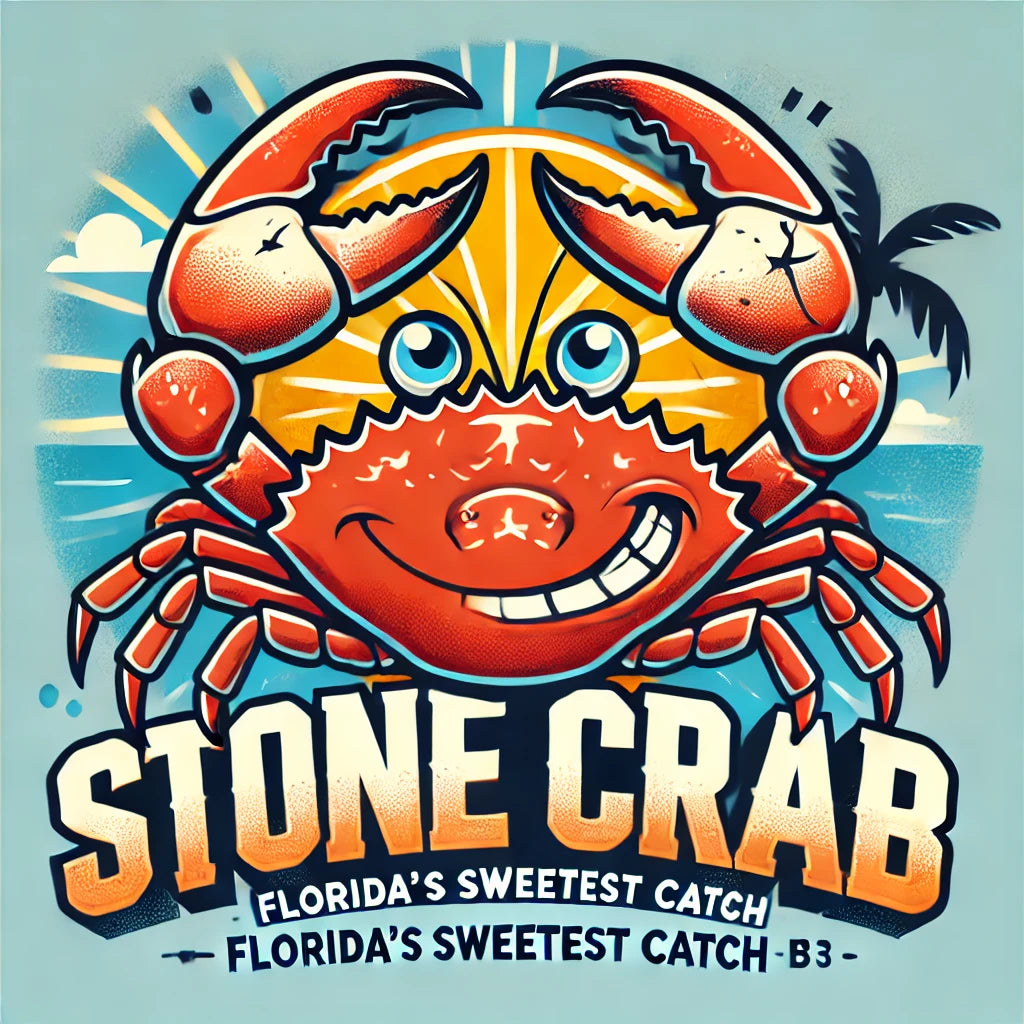
Why Stone Crab Claws Are Florida’s Most Expensive Finger Food (And Worth Every Penny)
Share

By the end of this blog, you’ll know why you’re paying top dollar for a handful of shell-cracking, sauce-dipping goodness—and why it’s one of the most sustainable seafoods on the planet.
Crackin’ Claws and Crunchin’ Numbers: The Stone Crab Story
If you’ve ever sat down at a Florida seafood joint, bib tied tight, mallet in hand, and a pile of stone crab claws staring you down, you’ve probably had two thoughts:
1️⃣ “This is gonna be delicious.”
2️⃣ “Why do these things cost more than a tank of gas?”
You’re not alone. Stone crab claws are one of the priciest seafoods around. But there’s a good reason for it—actually, several. Harvesting these claws isn't like tossing a net in the water and calling it a day. It's a delicate dance of science, sustainability, and straight-up hard work. And every time you dip one of those claws into mustard sauce, you’re tasting a story that started long before it hit your plate.
What Makes Stone Crabs So Special?
Unlike most seafood, stone crabs aren’t "caught" in the traditional sense. They’re more like "borrowed from." When fishermen pull stone crabs from the water, they’re not interested in the whole crab—just the claws. That’s because these critters can regrow their claws like some kind of aquatic Wolverine. This makes them one of the most renewable (and ethical) seafoods on the market. But that process of catching, clawing, and releasing them adds a whole lot of work—and cost.
Here’s the quick math on why your wallet feels a little lighter after ordering a plate of claws:
- Limited Season: You can only harvest stone crabs from October 15 to May 1, a short window that cranks up demand.
- Labor-Intensive Process: Fishermen set baited traps, check them daily, measure each claw, and only take claws that meet strict size limits (minimum 2 7/8 inches). The crab stays behind to grow a new one.
- Regrowth is Slow: Crabs don’t crank out new claws overnight. It can take several molting cycles—think months to years—to regrow a claw big enough for harvest.
- Post-Harvest Handling: The claws need to be boiled immediately to lock in the freshness, then chilled to perfection before hitting the market. That takes time, precision, and storage.
Put all this together, and you’re looking at one of the most involved seafood harvests in the industry. No wonder a plate of claws feels like a luxury.
How Do They Get the Claws Without Killing the Crab?

Here’s where stone crabs get really interesting. Instead of taking the whole crab, fishermen “declaw” it. It’s as wild as it sounds.
1️⃣ Trap It: Baited traps lure the crabs in (think fish heads, chicken necks—whatever smells tasty to a crab).
2️⃣ Measure It: Not all crabs make the cut. Only claws that are at least 2 7/8 inches long are eligible for harvest. Too small? Back in the water it goes.
3️⃣ Twist It Off: This part sounds rough, but it’s more delicate than it seems. Fishermen twist the claw at the joint like you’re unscrewing a soda cap. If done right, the crab isn’t harmed and can grow a new claw over time. Some fishermen take one claw to give the crab a better chance at survival, but it’s legal to take both.
4️⃣ Release It: Back into the ocean it goes, living to claw another day. The crab can still defend itself with its legs (and one remaining claw, if it has it) while it grows a fresh new set of pinchers. It's basically nature’s version of a renewable resource.
Why Are They So Dang Expensive?
At this point, you’re probably wondering: “If the crab doesn’t die, and the claws grow back, why am I paying so much?”
Here’s the deal.
- Labor Adds Up: Fishermen can’t just scoop up crabs in bulk. They have to check each trap individually, measure each claw, and twist it off carefully. That’s like having to hand-pick every grape in a vineyard—while standing on a rocking boat.
- Time is Money: The short harvesting season (October to May) limits supply, which increases demand. Less supply + high demand = big price tag.
- Scarcity & Reputation: Stone crab claws are considered a luxury item. People aren’t ordering them at drive-thrus. You’re getting them in high-end restaurants, seafood festivals, and fine dining spots. High-end demand means high-end prices.
When you crack open that shell, you're paying for every part of the process—traps, measuring, twisting, boiling, chilling, and transporting. It's a whole production just to put that claw on your plate.
How Do You Eat Stone Crab Claws?
Eating stone crab claws is an experience in itself. If you're thinking about a delicate nibble, forget it. This is hands-on work. Here’s the basic breakdown:
1️⃣ Crack It: Use a mallet, back of a spoon, or (if you’re feeling extra Floridian) the heel of your flip-flop. Crack it just enough to split the shell but not enough to smash the meat inside.
2️⃣ Peel It: Remove the shell pieces like you're peeling a boiled egg.
3️⃣ Dip It: Florida tradition says mustard sauce is the only way to go, but melted butter or cocktail sauce will do the trick.
4️⃣ Savor It: Stone crab meat is sweet, firm, and almost lobster-like. It's basically seafood candy.
Pro Tip: The meat is already cooked, chilled, and ready to eat when you get it. You’re just there to crack it open and enjoy.
Stone Crabs Are More Than a Meal—They’re a Tradition

Here’s the big takeaway: stone crab claws aren’t just another seafood option—they’re part of Florida’s coastal identity. They bring together fishermen, chefs, and seafood lovers for a few short months each year, making it feel like a seasonal celebration.
In Florida, you don’t just order stone crab claws, you experience them. From the crack of the shell to the first dip into mustard sauce, you’re tasting the story of sustainability, hard work, and craftsmanship. It’s a dish that’s been feeding Florida for generations, and if you ask anyone who’s had them, they’ll tell you it’s worth every penny.
So, next time you see that price tag at a seafood joint, remember this: You’re not just paying for a claw. You’re paying for the boat, the trap, the twist, the boil, and every salty mile it took to get from the Gulf of Mexico to your plate.
And I’d say that’s a pretty sweet deal.
